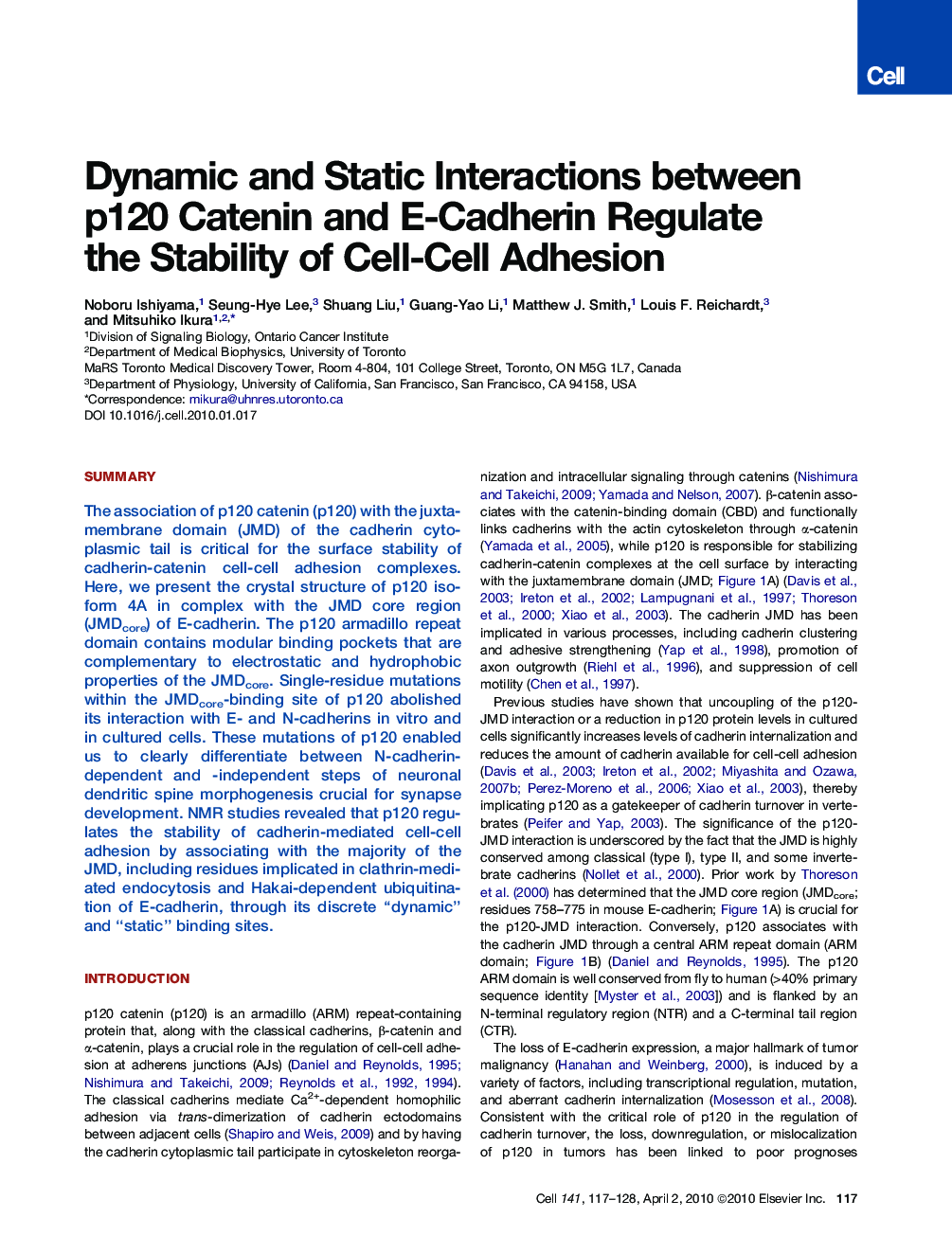| Article ID | Journal | Published Year | Pages | File Type |
|---|---|---|---|---|
| 2036418 | Cell | 2010 | 12 Pages |
SummaryThe association of p120 catenin (p120) with the juxtamembrane domain (JMD) of the cadherin cytoplasmic tail is critical for the surface stability of cadherin-catenin cell-cell adhesion complexes. Here, we present the crystal structure of p120 isoform 4A in complex with the JMD core region (JMDcore) of E-cadherin. The p120 armadillo repeat domain contains modular binding pockets that are complementary to electrostatic and hydrophobic properties of the JMDcore. Single-residue mutations within the JMDcore-binding site of p120 abolished its interaction with E- and N-cadherins in vitro and in cultured cells. These mutations of p120 enabled us to clearly differentiate between N-cadherin-dependent and -independent steps of neuronal dendritic spine morphogenesis crucial for synapse development. NMR studies revealed that p120 regulates the stability of cadherin-mediated cell-cell adhesion by associating with the majority of the JMD, including residues implicated in clathrin-mediated endocytosis and Hakai-dependent ubiquitination of E-cadherin, through its discrete “dynamic” and “static” binding sites.
Graphical AbstractFigure optionsDownload full-size imageDownload high-quality image (228 K)Download as PowerPoint slideHighlights► Crystal structure of p120 in complex with E-cadherin juxtamembrane domain ► Mutations in p120 confirm functional importance of its interface with cadherins ► Static p120 and E-cadherin interface is critical for high affinity interaction ► NMR reveals dynamic interactions that regulate the stability of cell-cell adhesion
